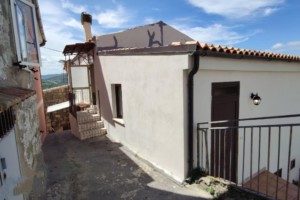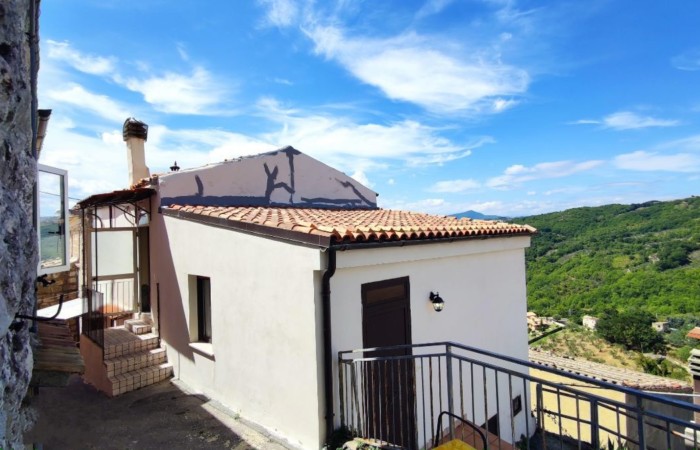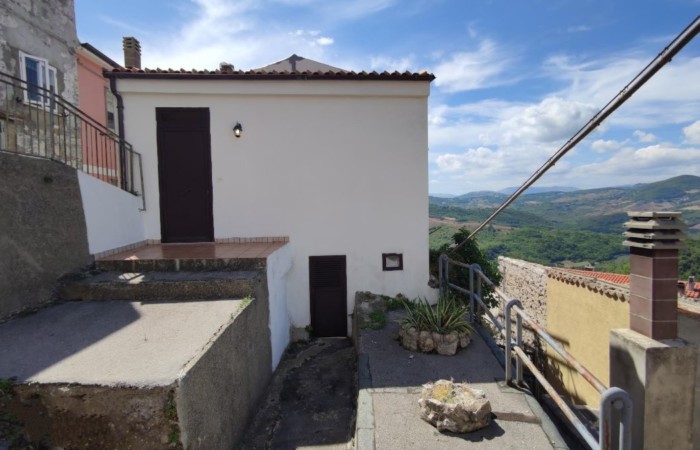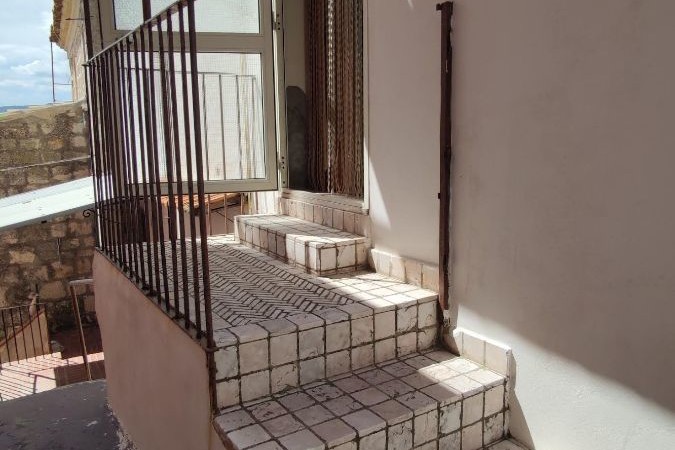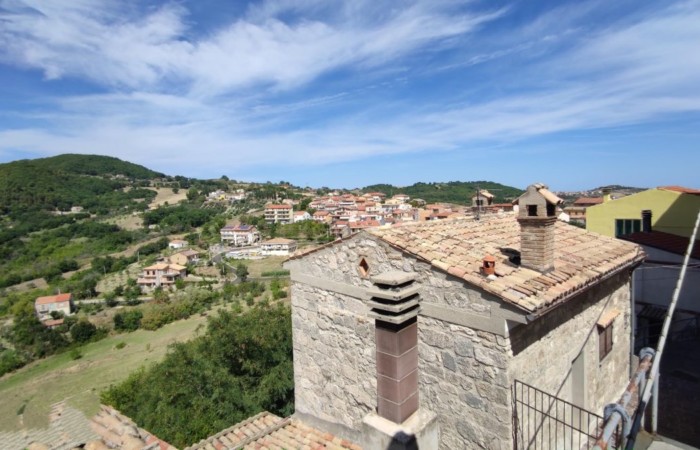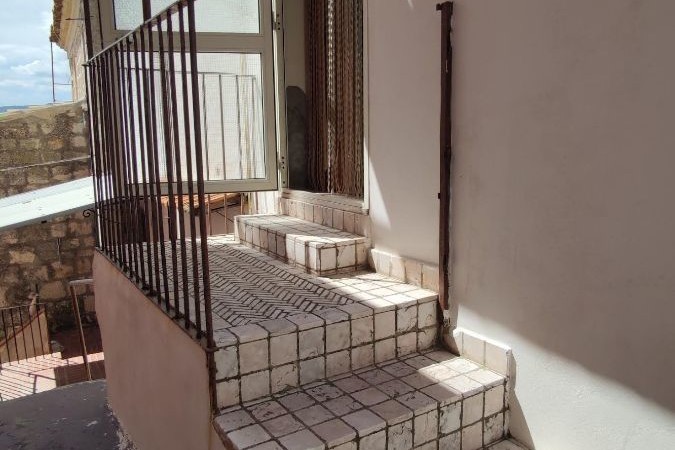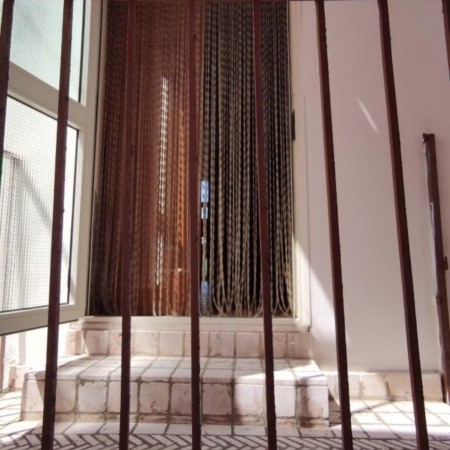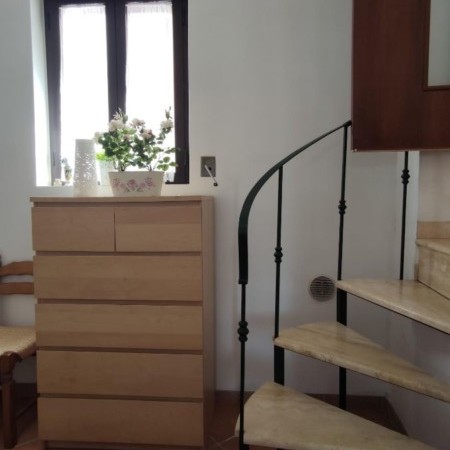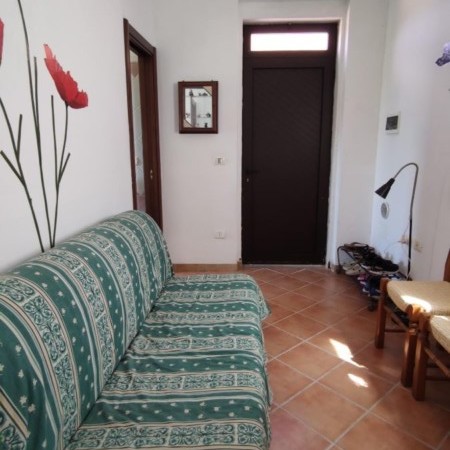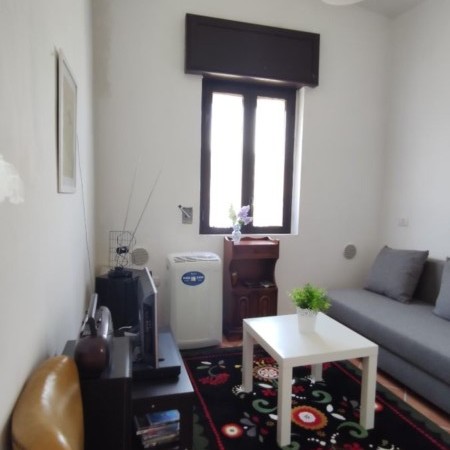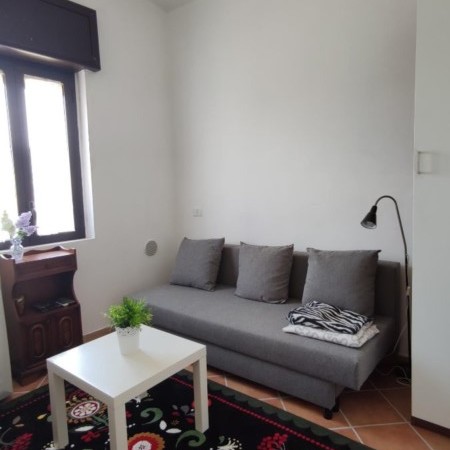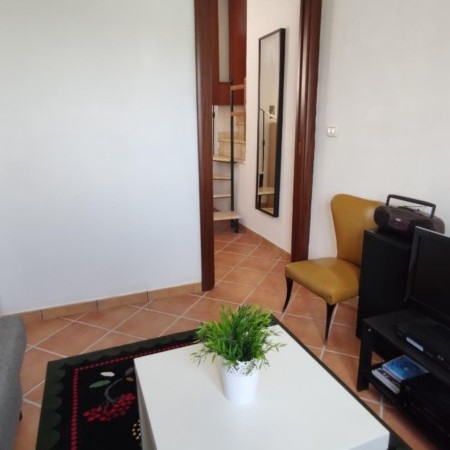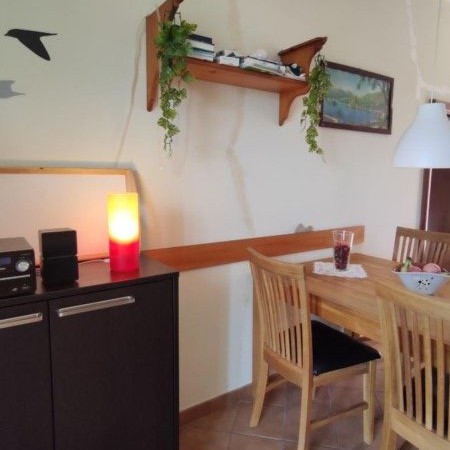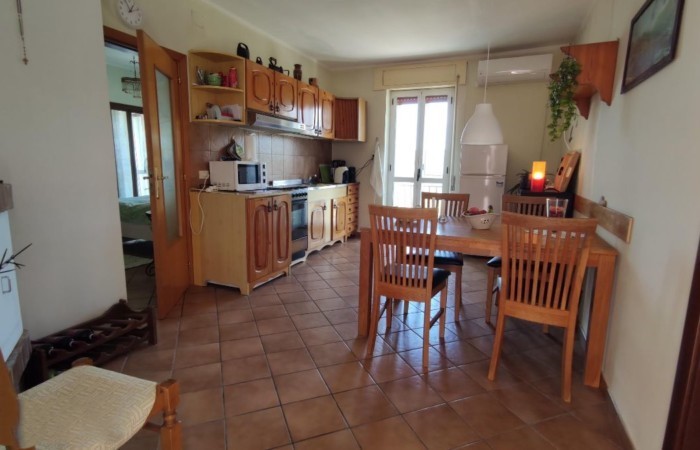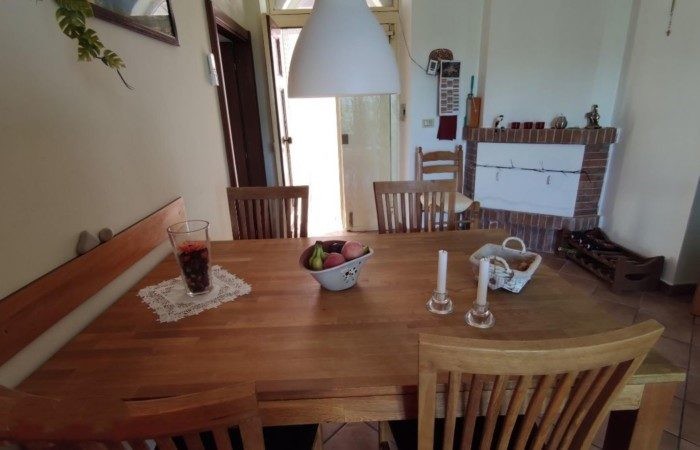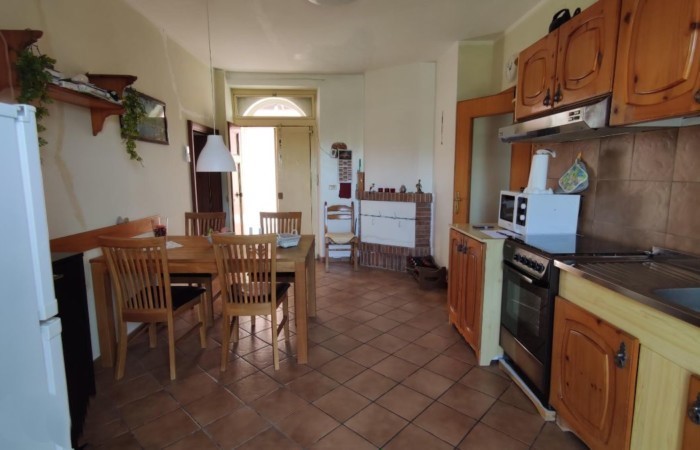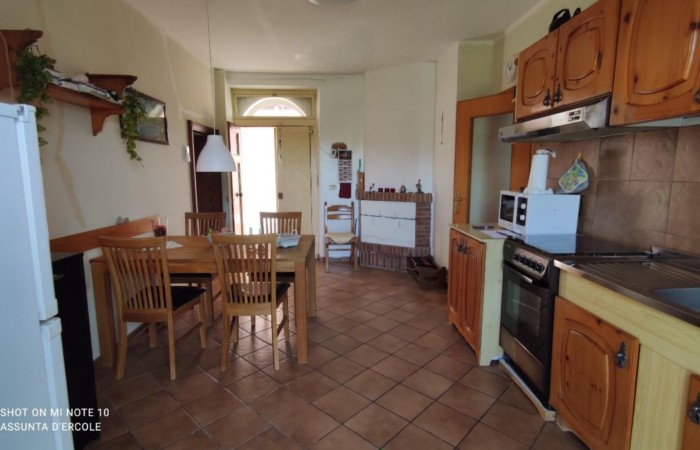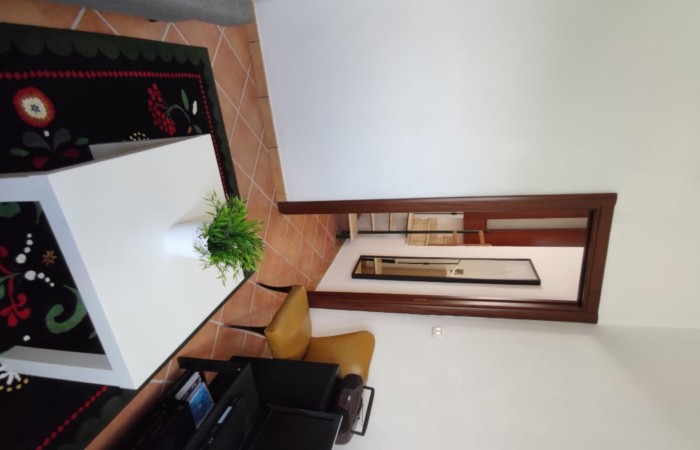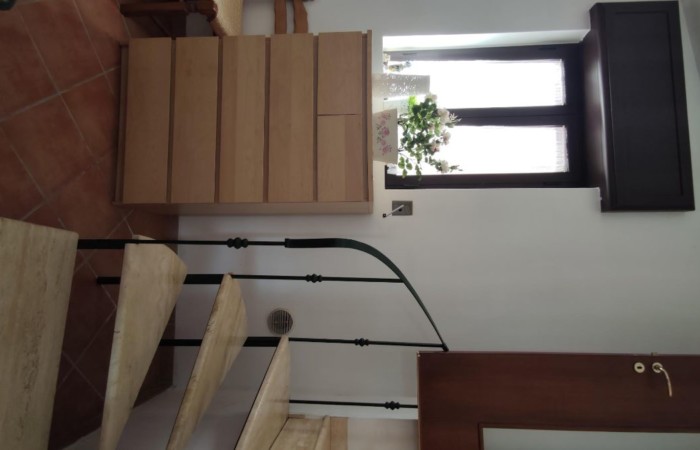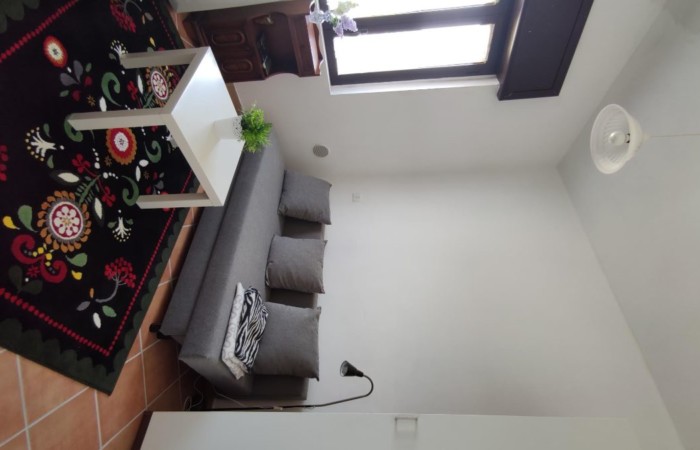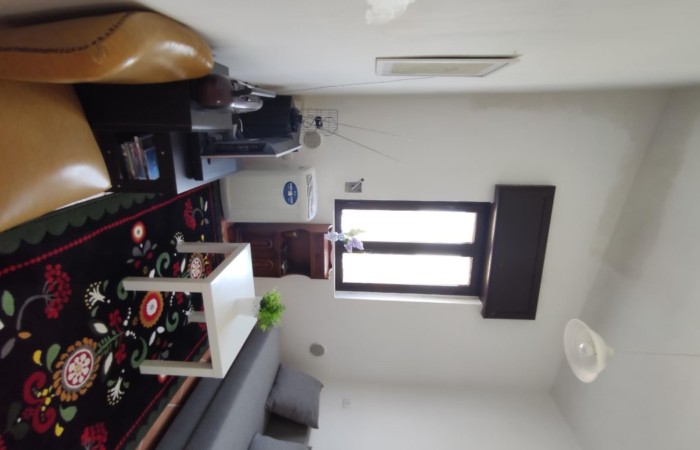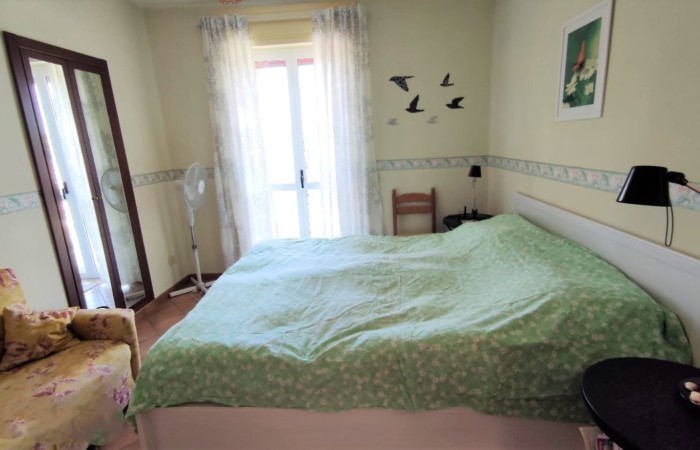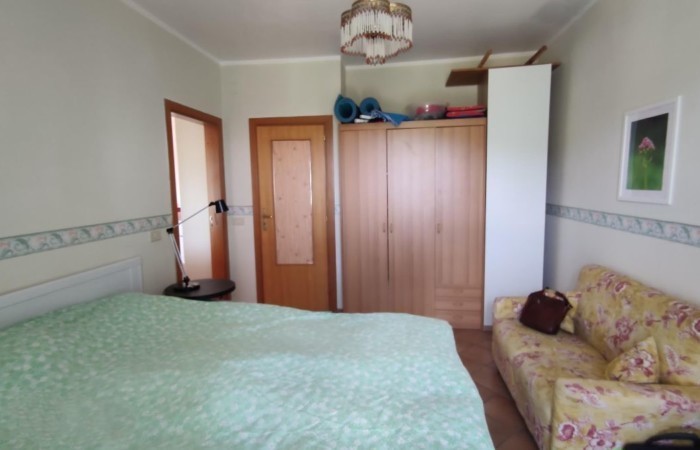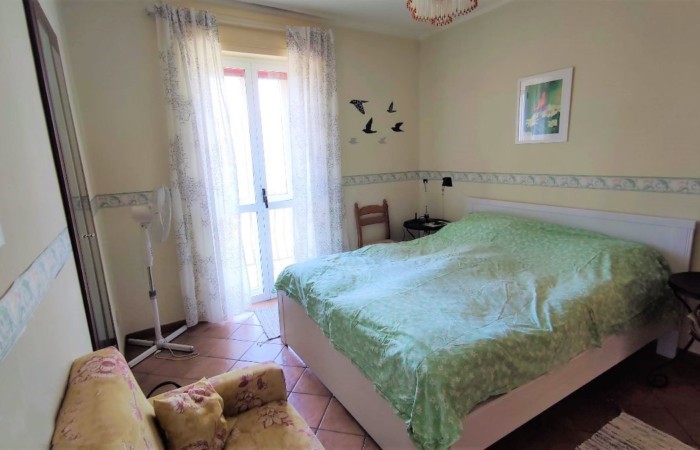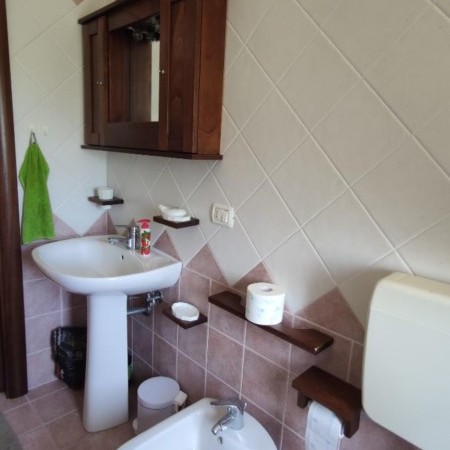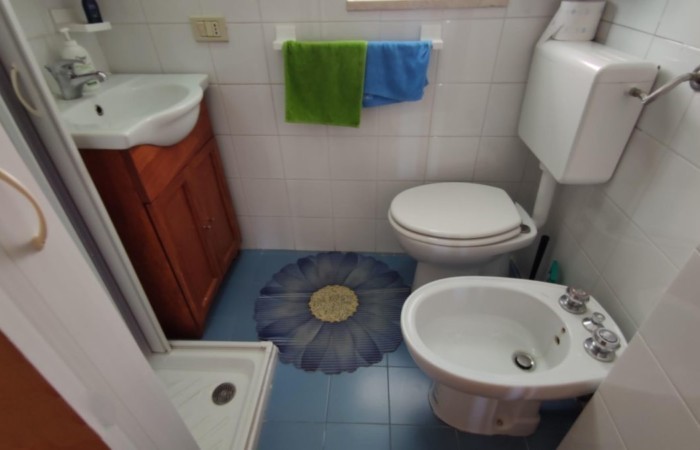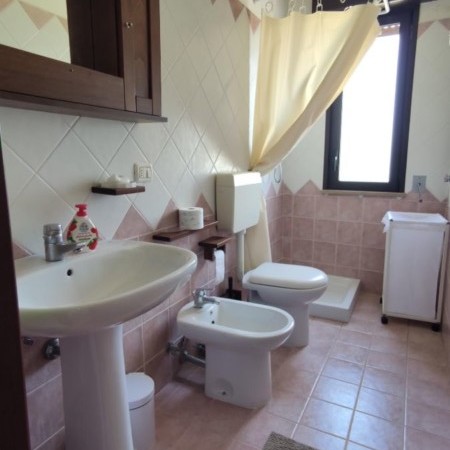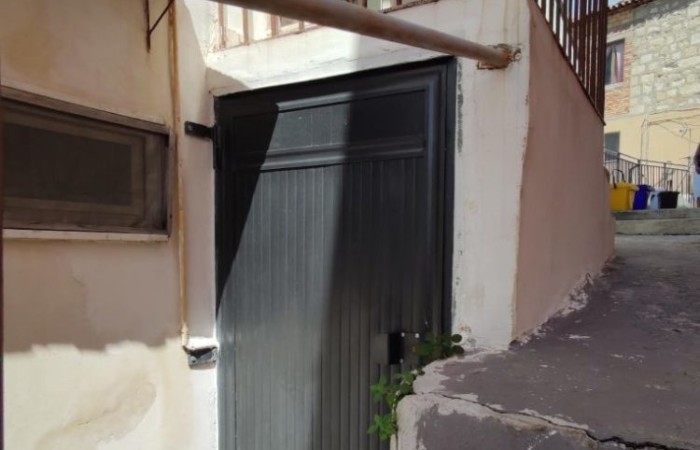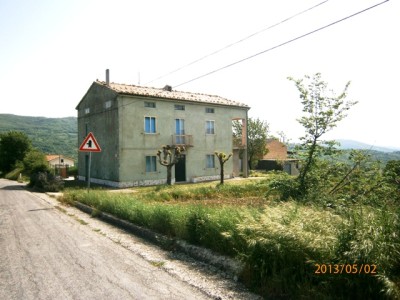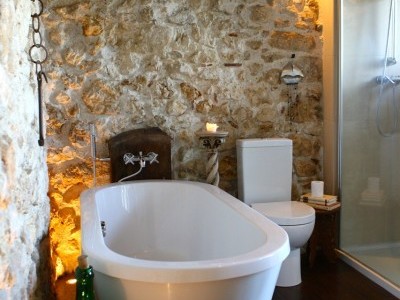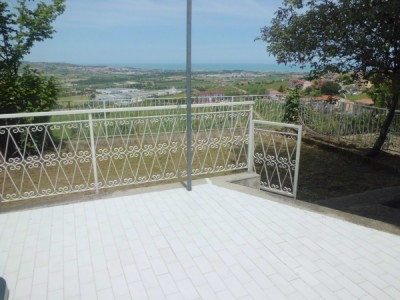Fresagrandinaria CHIETI
Details
- €69,000
- Town House , Historical
- Bedrooms: 2
- Bathrooms: 2
- Size: 74 Sq Mt.
- School District: Fresagrandinaria
For sale a nice townhouse perched in the historic centre of Fresagrandinaria with a dominant view of the Trigno valley. The house is ready to live in. One portion was completely rebuilt and in excellent conditions. With two entrances, one leading to the kitchen and the other one leading to the living room it consists of two floors. The upper floor is composed of an open plan entrance and kitchen, double bedroom with en-suite bathroom with shower. The new part downstairs is on a slightly staggered floor (connected with the upper floor) consisting of a hallway/living room, a bathroom with shower and a bedroom.
Both kitchen and bedroom have access to a balcony with a beautiful panoramic view. Underneath the external staircase a small storage room and water tank and autoclave. Total surface for covered living areas 74 sqm
The property enjoys a nice and comfortable communal courtyard that can be used in Summer with a table and chairs for outdoor meals and relaxation.
The building is very solid and in excellent conditions, both as static and cosmetic aspects. Good fixtures, roof newly redone, beautiful panoramic view. All utilities in place such as water, gas, electricity and equipped with air conditioning. As of sewage the house is connected to the municipal sewer system. Selling Price: €69.000
Energy class F, EPgl nren 292.01 kWh/sqm yearly, EPgl ren 72.23 kWh/sqm yearly.
Fresagrandinaria is a charming village with 956 resident inhabitants. It is on a hilly mountainous area of about 400 mt altitude above sea level within the province of Chieti and part of the Community Medio Vastese. The town offers full services with various shops, restaurant, pharmacy, bank and post office.
Distances to main locations of interest: 15 minutes from the Adriatic coast (beaches of Vasto, San Salvo and Casalbordino); one hour from Pescara airport; skiing and snowboarding in Pizzoferrato one hour and 30 minutes
History
On the basis of random archaeological finds, we can hypothesize continuous human presence in the hills for over a thousand years before Christ. “The presence of the Fresagrandinaria area dates back at least to the Final Bronze Age (11th-10th century BC), a period in which a cup of dough with a vertical ribbon handle with raised apexes is dated” (A. Faustoferri, ‘Oltre Histonium … 1996’).
Fortified village
The first structure dates back, as previously mentioned, to the 9th century, around a fortress built by the counts of Chieti on a ridge of chalky rock overlooking the Trigno valley.
To see: Church of the Santissimo Salvatore, located in Salita Cavour. The original layout dates back to the birth of the village and was later transformed in the 19th century. The historical events of the religious building are related to the castle and the fortified village given that it is located at the highest point of the town; Church of the Madonna (church Madonna delle Grazie), of medieval origin, was cited by Ughelli as dependent on the Benedictine abbey of Santa Maria di Tremiti. Santa Maria delle Grazie is indeed a Madonna greatly venerated by Benedictine friars. The building was mentioned several times in the privileges and confirmations of Popes Leo IX (1053), Nicholas II (1061), Antipope Anacletus II (1136), Pope Alexander III (1172). In 1279 King Charles I of Anjou donated it to a lay dignitary; remains of the Abbey of Sant’Angelo in Cornacchiano; municipal fountain, located in the ancient centre. It was built in 1891 when the new aqueduct was inaugurated; Palazzo de Lellis, Palazzo Rocchio, Palazzo De Martinis, Palazzo Cosmo Terpolilli stately homes located in the historic centre and dating back to the seventeenth and eighteenth centuries.
Peasant and Migration Museum
On 10 January 2016, the “Peasant and Migration Museum of the Trigno Valley” was inaugurated in the ancient rooms of a medieval tavern, a warehouse and an oil mill dug into the rock, with material coming mostly from free donations from Fresani citizens. This museum aims to be a testimony of the peasant life of the past when there was no electric light, motor cars, running water and toilets, asphalted roads, telephones, radio and television.
__________________________________________________
ITALIANO
Vendesi casa di paese (terratetto) arroccata nel centro storico di Fresagrandinaria con vista dominante sulla valle del Trigno. La casa è pronta per essere abitata. Una porzione è stata completamente ricostruita e in ottime condizioni. Con due ingressi, uno che conduce alla cucina e l’altro al soggiorno, si sviluppa su due livelli. Il piano superiore composto da ingresso e cucina open space, camera matrimoniale con bagno en-suite con doccia;
La parte nuova al piano inferiore si sviluppa su un piano leggermente sfalsato (collegato con il piano superiore) e composta da un disimpegno/soggiorno, un bagno con doccia e una camera da letto.
Sia la cucina che la camera da letto hanno accesso ad un balcone con una bellissima vista panoramica. Sotto la scalinata esterna un piccolo ripostiglio, un serbatoio per l’acqua con autoclave.
Superficie totale area copera vivibile 74 mq
La proprietà gode di un grazioso e confortevole cortile condominiale, utilizzabile nel periodo estivo, attrezzato con tavolo e sedie per mangiare all’aperto e rilassarsi.
L’immobile è molto solido ed in ottime condizioni, sia come aspetto statico che estetico. Infissi buoni, tetto appena rifatto, bella vista panoramica.
Tutte le utenze presenti come acqua, gas, luce e dotato di aria condizionata. Per quanto riguarda le fognature, la casa è collegata alla rete fognaria comunale. Prezzo di vendita: € 69.000
Classe energetica F, EPgl nren 292.01 kWh/mq anno, EPgl ren 72.23 kWh/mq anno.
Fresagrandinaria è un grazioso borgo di 956 abitanti residenti. Si trova in una zona collinare montuosa a circa 400 mt di altitudine sul livello del mare, nella provincia di Chieti e facente parte della Comunità Medio Vastese. Il paese offre servizi completi con negozi di vario genere, ristorante, farmacia, banca e ufficio postale.
Distanze dalle principali località di interesse: 15 minuti dalla costa adriatica (spiagge di Vasto, San Salvo e Casalbordino); un’ora dall’aeroporto di Pescara; sci e snowboard a Pizzoferrato un’ora e 30 minuti
Storia In base a casuali ritrovamenti archeologici si può ipotizzare la presenza umana continuativa da oltre un migliaio d’anni prima di Cristo, nelle alture. “La frequentazione del territorio di Fresagrandinaria risale almeno all’età del Bronzo Finale (XI-X secolo avanti Cristo) epoca in cui si data una tazza d’impasto con ansa verticale a nastro ad apici rilevati” (A. Faustoferri, ‘Oltre Histonium… 1996’).
- Borgo fortificato
- Il primo impianto risale, come precedentemente accennato, al IX secolo, attorno a una rocca fatta costruire dai conti di Chieti su un costone di roccia gessosa su cui si domina la vallata del Trigno.
- Da vedere: Chiesa del Santissimo Salvatore, sita in Salita Cavour. L’impianto originario risale al sorgere del borgo ed in seguito trasformato nel XIX secolo. Le vicende storiche dell’edificio religioso sono correlate al castello ed al borgo fortificato visto che è sito nel punto più alto del paese; Chiesa della Madonna (chiesetta Madonna delle Grazie), di origine medievale, fu citata dall’Ughelli come dipendente dell’abbazia benedettina di Santa Maria di Tremiti. Santa Maria delle Grazie è appunto una Madonna molto venerata dai frati benedettini. L’edificio fu più volte citato in privilegi e conferme dei papi Leone IX (1053), Nicola II (1061), antipapa Anacleto II (1136), papa Alessandro III (1172). Nel 1279 re Carlo I d’Angiò la donò ad un dignitario laico; resti dell’abbazia di sant’Angelo in Cornacchiano; fontana municipale, sita nell’antico centro. È stata realizzata nel 1891 quando fu inaugurato il nuovo acquedotto; Palazzo de Lellis, Palazzo Rocchio, palazzo De Martinis, palazzo Cosmo Terpolilli abitazioni signorili poste nel centro storico e risalenti al sei-settecento.
Museo contadino e delle migrazioni Il 10 gennaio 2016 è stato inaugurato il “Museo contadino e delle migrazioni della Valle del Trigno” negli antichi locali di una taverna medievale, fondaco e trappeto oleario scavati nella roccia, con materiale proveniente in massima parte da donazioni gratuite di cittadini fresani. Tale museo vuole essere una testimonianza della vita contadina di un tempo quando non vi era la luce elettrica, le macchine a motore, l’acqua corrente e i bagni, le strade asfaltate, i telefoni, la radio e la televisione.
